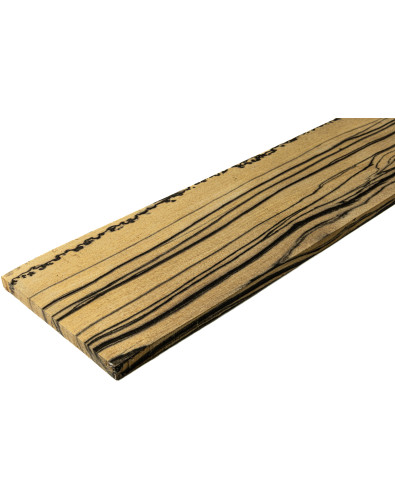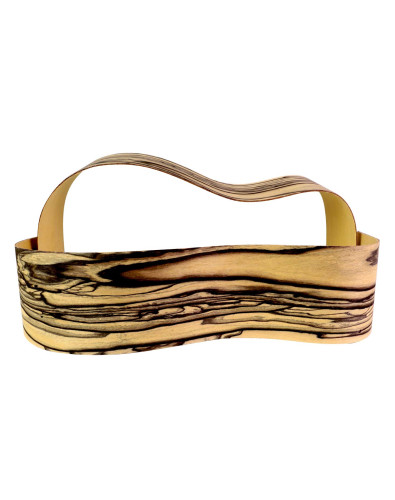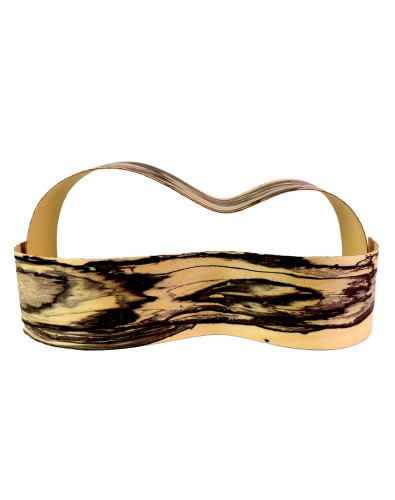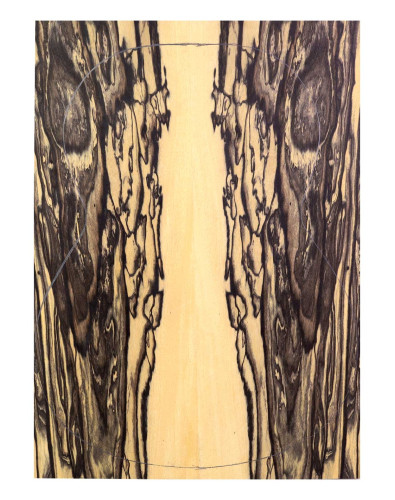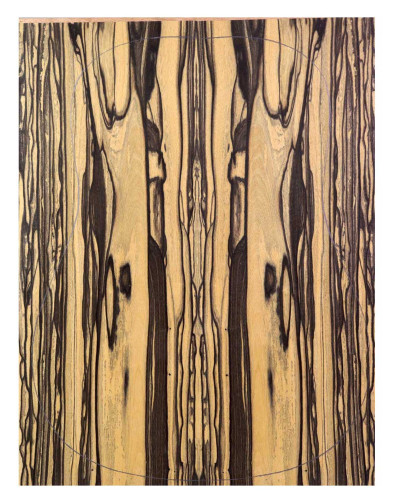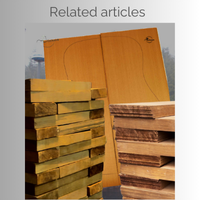- News
- 23 likes
- 1644 views
- 0 comments
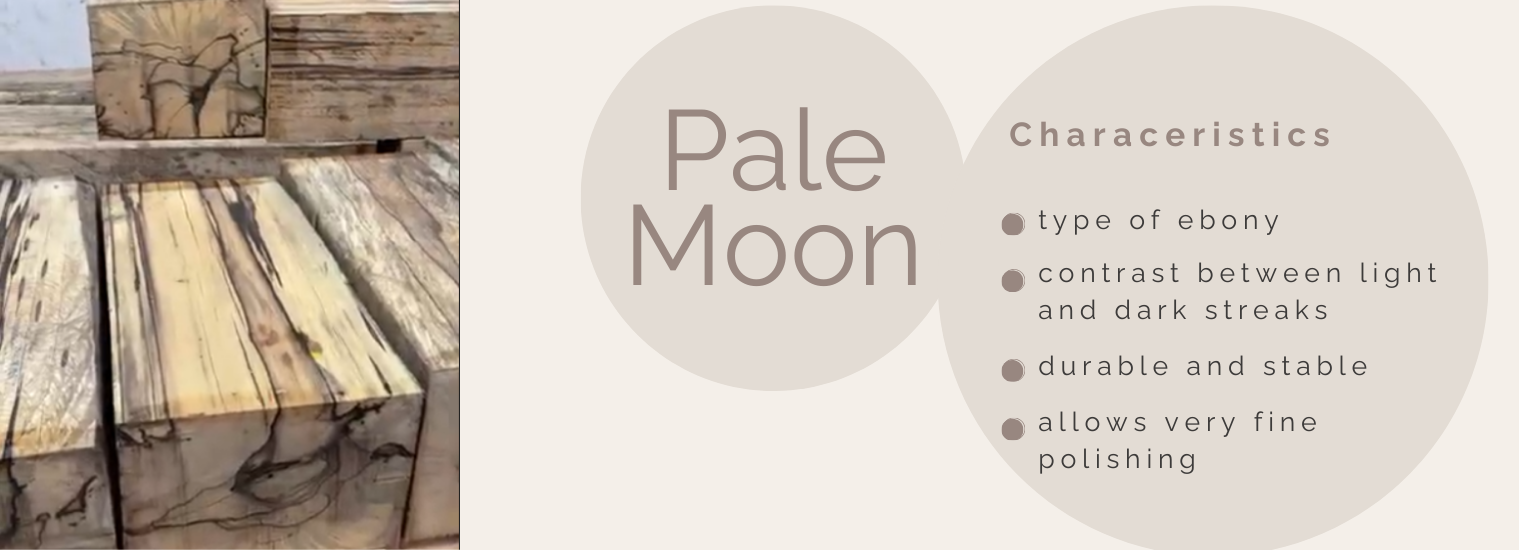
Pale Moon: a blend of elegance and durability
In the world of luthiery, few woods manage to combine striking visual impact with the acoustic properties that define a great instrument. Pale Moon, also known as moon ebony (Diospyros malabarica), is one of them. With unique streaks ranging from black and gray to cream tones, its appearance evokes marble or the night sky, making each plank a unique piece of nature.
Pale Moon, native to Asia, is a wood that stands out not only for its hardness and durability but also for transforming the look and essence of an instrument. For luthiers seeking something special, Pale Moon offers a natural design that shines in both subtle details and prominent instrument features, adding an undeniable touch of character.
Where Pale Moon comes from and what makes it special
Pale Moon grows in Southeast Asia. Its most captivating feature is the contrasting streaks in shades of black and light gray on a white or cream background, a visual effect that gives each piece a unique appearance. Unlike traditional black ebony, which is uniform in color, Pale Moon unpredictably alternates these shades, making every crafted instrument or piece truly one-of-a-kind.
In the workshop, Pale Moon presents a fascinating visual challenge: its streaks can shift from defined, marked lines to soft shapes that blur in a natural gradient. This makes each piece a canvas where the luthier decides how to highlight those unique markings on different parts of the instrument. This irregularity is not a flaw but a kind of signature that adds authenticity and unmatched character to the final instrument.

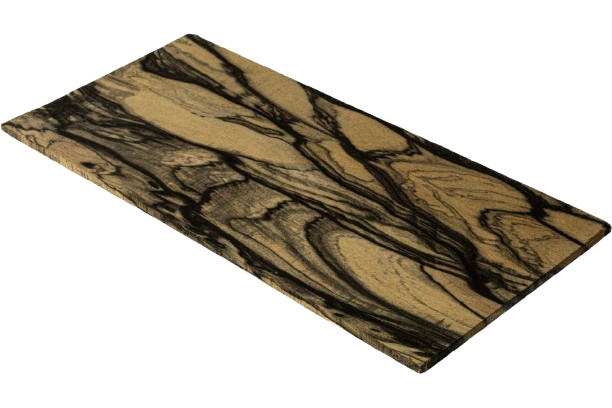
A unique sound character
Beyond aesthetics, Pale Moon imparts a distinctive sound character, leveraging the density and resilience typical of the ebony family. Like other dense woods, this variety has a bright, well-projected tone with excellent treble attack and precise midrange response. It’s ideal for musicians seeking a defined and articulate performance, especially in genres where sonic detail is crucial, such as jazz or classical music.
Due to its hardness and ability to respond to high frequencies, Pale Moon is especially popular in guitar and bass fingerboards. Besides its striking aesthetics, its solid and polished feel provides a smooth playing experience, enabling fast and precise execution in any style. In high-end acoustic guitars, some luthiers choose to use Pale Moon for the bridge, giving the instrument a bright tonal base that balances harmonics and reinforces sound projection.
Although it is less common in full bodies, Pale Moon can be combined with other woods for unique visual and tonal contrasts. This use allows luthiers to emphasize both the visual design and the acoustic properties of the wood, creating instruments that captivate with both their sound and distinctive appearance.
Tips for working with Pale Moon in the workshop
Working with Pale Moon requires respect for the piece. It is very dense wood and, while it allows polished and glossy finishes, it can be demanding on tools. Its grain is typically uniform in texture, making polishing easier, but the material tends to wear down blades and saws quickly. Additionally, it produces fine dust that can be irritating, so it’s essential to work in a well-ventilated space and use appropriate protective equipment.
A practical tip for luthiers is to use clear sealers that enhance the brightness of the light streaks, intensifying the contrast with the black or dark gray areas. Applying a base coat of oil can also be a good idea to give the wood a richer, more luminous appearance before the final finish is applied.
Another important detail is the minimal amount of waste generated by Pale Moon, as it rarely presents “wormholes” or natural flaws in the sapwood.
Examples of instruments featuring Pale Moon
The uniqueness of Pale Moon has attracted high-end luthiers and instrument manufacturers who have incorporated it into unique and custom models. Below are some standout examples:
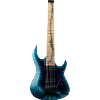
Kiesel Aries
The Kiesel brand has produced models like the Aries with Pale Moon fingerboards, utilizing both its hardness and singular aesthetic to offer a smooth playing experience and striking appearance.
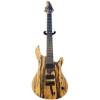
Mayones Regius 7 Baritone
This limited-edition model features a Pale Moon fingerboard, contributing not only a striking aesthetic but also tonal characteristics that benefit musicians seeking a clear and defined sound.
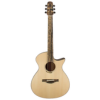
Kraut OM 2018
Ray Kraut created an OM guitar in 2018 using Pale Moon for the back and sides, combined with a European spruce top. A visually striking instrument with balanced tonality.
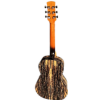
Urlacher Guitars Parlor
Rebecca Urlacher designed a Parlor guitar with Pale Moon back and sides, taking advantage of the wood's unique grain to produce a clear and resonant sound.
These instruments demonstrate how Pale Moon can be integrated into the construction of unique pieces, adding value in terms of both aesthetics and sound performance. For musicians and collectors, each Pale Moon instrument becomes a collectible piece, standing out for its exclusivity and character.
Build your next guitar with pale moon and Maderas Barber
Pale Moon is not only an option for its exotic beauty but also for the sound quality and unique personality it brings to each instrument. This type of wood, which combines aesthetics and performance, is carefully selected to be part of your next project. If you want a guitar with true authenticity, Maderas Barber is here to help you build it.

